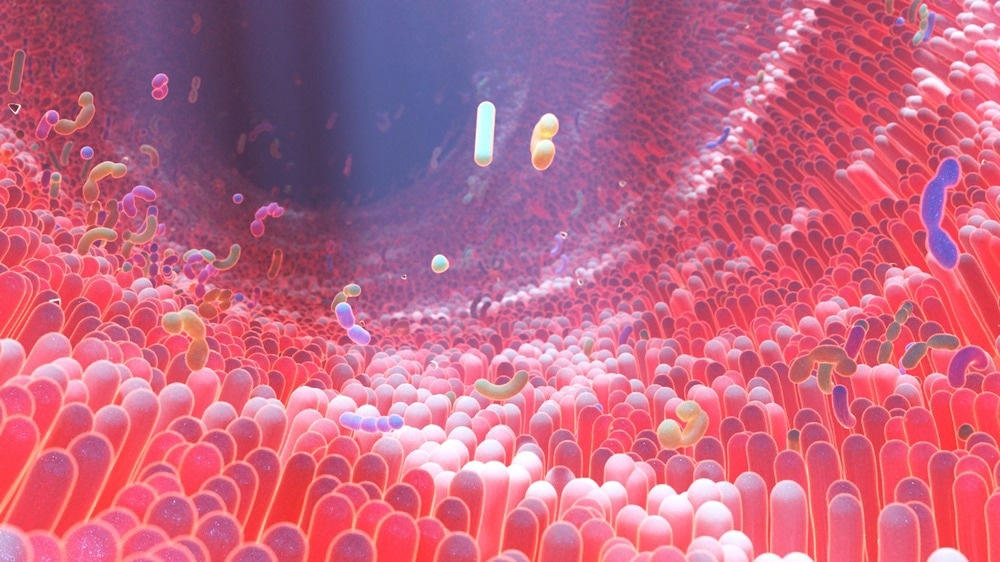In a recent study published in the Nutrients journal, researchers explored the interaction of white adipose tissue (WAT) mitochondria with gut microbiota in obesity.

Study: The Crosstalk between Gut Microbiota and White Adipose Tissue Mitochondria in Obesity. Image Credit: AlphaTauri3DGraphics/Shutterstock.com
Background
Even though increasing data has been gathered over the past few decades, the fundamental molecular foundation of adiposopathy is still not completely known.
Adipose tissue (AT) dysregulation is a critical factor in the pathophysiology of obesity and its cardiometabolic complications. In this context, mitochondria have been identified as key regulators of both white (WAT) and brown (BAT) adipose tissue (BAT) metabolism and function.
Mitochondria are intracellular organelles that coordinate energy production and experience highly dynamic adaptive changes in reaction to changing environments.
Brown and white adipose tissue
Due to the significant impact on the control of metabolism through the secretion of hormones and cytokines, it has earned the position of an endocrine organ.
WAT and brown adipose tissue (BAT) are the two primary kinds of adipose tissue that differences in cell structure, histology, quantity, anatomic position, and function can distinguish. Subcutaneous adipose tissue (SAT) and the visceral district are the primary physical regions where WAT is located.
Along with SAT and WAT, ectopic fat deposits can enter skeletal muscle, arteries, and the myocardium. Despite their lesser quantities, these deposits are important in developing obesity problems.
BAT represents a minimal proportion of body weight. The quantity is greater in newborns, tends to decline in adults, and is still present in the supraclavicular region, and in trace amounts around the great vessels in the paravertebral and mediastinal regions.
Due to its capacity to store excess energy in the form of triglycerides, which can later be released during times of elevated energy demand, WAT is crucial to maintaining balance in the energy system. BAT contributes to the balance of energy. The so-called non-shivering thermogenesis occurs at BAT.
Obesity-related association between AT mitochondria and gut microbiota
Gut microbiota: A distinct rise from birth to maturity, followed by a decline in old age, is demonstrated by research on age-dependent gut microbiota alterations.
A richer and more varied gut microbiome has been found in centenarians compared to young people, highlighting the critical role that gut microbiota variety plays in promoting good aging.
In addition, a recent review noted that some taxa, like Christensenellaceae and Akkermansia, may promote gut homeostasis and healthy aging by lowering adiposity, inflammation, and the ensuing risk of developing metabolic and cognitive dysfunction in addition to the higher bacterial diversity.
Changes in gut microbiota in obesity: Studies on germ-free mice, better protected against obesity under a high-fat food plan than their equivalent with microbiota, provide the first proof of a connection between obesity and gut microbiota.
The fact that germ-free (GF) mice receiving fecal microbiota transplants (FMT) from fat animals gained significantly more weight than GF mice receiving FMT from slender animals serves as additional evidence.
In people, the link between gut bacteria and obesity has also lately been discovered. When compared to healthy individuals with average weight, obesity is associated with an imbalance in the makeup and function of the gut microbiota, according to several lines of research.
The gut microbiome of obese people with healthy and unhealthy metabolisms was compared. Compared to their metabolically healthy obese (MHO) equivalent, obese individuals with multiple comorbidities showed a substantial decrease in the variety of their gut microbiota.
The taxonomic study showed that the MHO versus metabolically unhealthy obese (MUO) individuals had a generally substantial excess of short-chain fatty acids (SCFAs)-producing bacteria like Oscillospira and the Clostridium genus.
Interactions in Obesity Less is known about how gut microbiota is mediated by mitochondrial functionality in WAT, particularly in the setting of obesity in humans.
Crosstalk between AT mitochondria and gut microbiota: The crosstalk between gut microbiota and mitochondria has primarily been described in colonocytes, the liver, the pancreas, skeletal muscle, and BAT. In GF mice inoculated with gut microbiota isolated from obese individuals, the role of gut bacteria in host metabolism control was amply established.
Furthermore, it was discovered that microbiota-depleted rodents displayed improved insulin sensitivity and glucose tolerance in addition to a rise in the expression of fat browning markers.
It is now known that pathobionts can infiltrate the intestines and harm the host's metabolism and inflammation.
As an illustration, it has been demonstrated that three pathobionts—Oscillibactervalericigenes, Barnesiellaviscericola, and H. saccharovorans—damage mitochondrial oxidative phosphorylation (OXPHOS) in WAT, resulting in the promotion of insulin resistance in both rodents and people.
The detrimental impacts on energy metabolism and WAT inflammation are connected to the lipopolysaccharide (LPS) signaling system, according to several lines of evidence.
Conclusion
The study findings established that AT dysregulation is a crucial mechanism in the pathogenesis of obesity and its cardiometabolic side effects.
In recent years, there has been an increase in interest in determining the fundamental genetic causes of adiposopathy.
Since WAT and BAT metabolism and function are crucially regulated in this context, mitochondria—organelles that customize their biological reaction to the interior and outer environment—can be critical in managing obesity and its comorbidities.